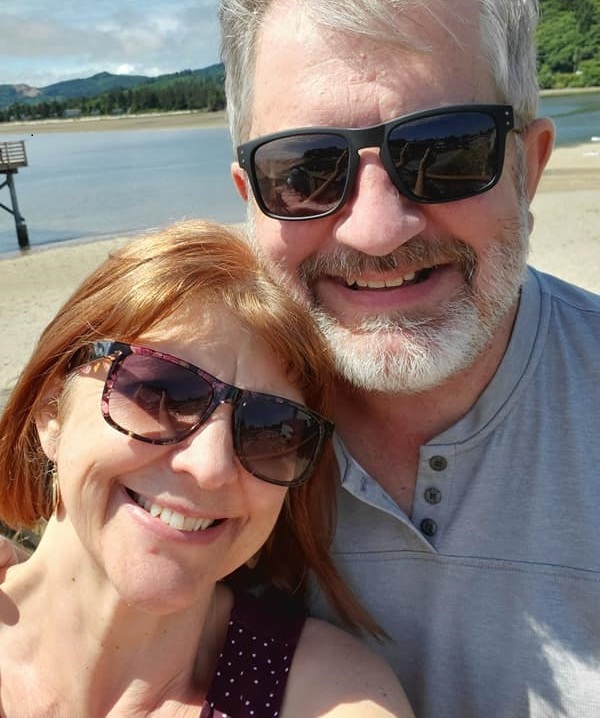When you read the first four New Testament books quickly and carefully, you’ll notice obvious differences. Why the differences?
When Matthew, Mark, Luke and John wrote their Gospels, they each had an enormous “word bank.” Like many ancients, they were trained to memorize large blocks of content they heard from Jesus and others.
Each of their “word banks” covered three years of Jesus Christ’s public ministry. Matthew and John were there for almost all of it. Mark’s primary source, Peter, was there for almost all of it as well. Luke relied on personal interviews with many sources, including Mary the mother of Jesus. Matthew interviewed Mary, as well.
Jesus Christ’s public ministry starts with His baptism by John the Baptist and His temptations by the Devil. It includes His extensive travels all across Israel and into at least three foreign lands. In addition, it includes His teachings by the dozens of hours.
His conversations by the scores of hours. And His healings by the hundreds. What’s more, it includes His feedings of the 5,000, the 4,000, and others. And His raising of the dead including Jairus’s daughter, a widow’s son, and His dear friend Lazarus.
All told, the four Gospel writers may have had the equivalent of thousands of pages in their word banks. Only a few hundred pages rose to the “best of the best” list. From the best they carefully and deliberated selected only those events, teachings, and miracles of Jesus that best fit their specific audience, narrow purpose, and detailed outline.
Even when the four Gospel writers chose to describe the same miracle (say, the feeding of the 5,000 or Peter’s three denials), they couldn’t even begin to tell everything they knew. At best, it would confuse their readers. At worst, it would make readers feel severely overwhelmed.
Like all good, great, and Holy Spirit-inspired writers, Matthew, Mark, Luke and John had to leave out almost everything they knew.
What about Apparent Contradictions?
When it comes to addressing apparent Bible contradictions, especially in the four Gospels, it’s best to start with Journalism 101. The basic principles of journalism include a strict adherence to asking and answering six key questions: Who? What? When? Why? Where? How?
Any trained journalist, reporter, or writer will compile far more facts than she can report. So, she uses the principle of selectivity: she reports only the facts deemed most relevant to her intended readers.
As a result, a news story about an NBA game will sound far different in the guest’s hometown than in the local news. Same game, same initial set of 1,234 facts—but a much different audience. That’s why most players aren’t even named.
The same principle of selectivity applies to Scripture. John wasn’t trying to write an Exhaustive Life of Jesus Christ. Instead, he admits, “Jesus did many other things as well. If every one of them were written down, I suppose that even the whole world would not have room for the books that would be written” (John 21:25).
In other words, John selected only those events, miracles, interviews, teachings, prayers, persecutions, and sufferings that best communicated the Gospel message to his intended audience.
Ditto for Luke, Mark and Matthew.
Not surprisingly, the four Gospels differ widely in their introduction, scope, message, length, and conclusion. Yes, each Gospel has a specific conclusion, with the possible exception of Mark. We’ll get to that below. First, let’s consider...
Peter Denied Jesus Christ—To Whom?
One of the few things all four Gospels record is Peter’s three denials. Yet to whom did Peter make those denials?
Matthew says: (1) to a maid, (2) to another maid, and (3) to bystanders. Okay. That’s clear enough.
Mark says: (1) to a maid “of the high priest,” (2) to the same maid, and (3) to bystanders. Oops. The second denial is different.
Luke says: (1) to a maid, (2) to someone else—a man, and (3) to still another. Oops again. The second denial is different again, and the third denial focuses on an individual, not a group of bystanders.
John says: (1) to a maid, (2) to “they”—a small group, and (3) to one of the servants (a relative of the man whose ear Peter cut off). Oops yet again. The second denial is different yet again, and the third denial focuses on a specific individual, not a group of bystanders.
For centuries skeptics and critics have claimed this is one of the worst (or most undeniable) Bible “errors.”
It’s crystal-clear that the four Gospel writers present differing accounts of Peter’s denials.
Do their differences contradict each other? It sure seems so!
Then again…
Contradict—Or Complement?
Like any good journalist, each Gospel writer had to leave out almost all of what he knew—otherwise, he never would have finished writing.
Leaving out almost all details isn’t wrong. It’s basic selectivity—again, what every good, great, and Spirit-inspired writer does.
In other words, the differences in the four Gospels don’t contradict each other. Rather, they complement each other.
So, to whom did Peter deny Jesus Christ? I’ve run this by many professional journalists, by hundreds of university students, by dozens of high schoolers, and even by a dozen 6th graders.
To my surprise, all of them rather quickly harmonized the four Gospel accounts as shown below.
First denial: a maid of the high priest confronts Peter, and then talks with another maid. (Six minutes?)
Second denial: the two maids, plus at least one man (their boss?), confront Peter head-on. (Nine minutes?)
Third denial: a larger group, including a servant who was upset at Peter, confront him even more aggressively. (Twelve minutes?)
Does this mean every apparent contradiction in the Gospels or other Scripture passages can be easily resolved? No, but most can.
We certainly don’t have to speculate about whether Peter actually denied Jesus Christ three (vs. four, five, or even six) times.
That’s good to know as we count down to Passion Week!
So, what about other Gospel “errors”?
Assumptions Matter!
Before tackling other apparent Gospel differences, it’s important to think through one’s assumptions about the reliability of the Bible.
The following presuppositions form a helpful grid through which to study potential biblical errors.
1. Some apparent errors were caused by faulty transmission or translation. We see the latter in the New World Translation (NWT) of John 1:1, which reads: “In the beginning was the Word, and the Word was with God, and the Word was a god.” That’s a faulty translation to be sure!
2. Some apparent errors are caused by faulty observations or interpretations. We see the latter in Luke 7:36-50, which some claim is the same as a similar incident right before Passion Week (Matthew 26:6-31, Mark 14:3-9, and John 12:1-8). The latter incident occurred quite some time later, probably took place in a different city, and definitely involved a very different woman. Similar in some ways, but not in a number of important ways.
3. Most apparent errors can be solved by discovering the source of the problem and examining it carefully and honestly. Many Christians and not-yet-Christians alike assume that Jesus traveled with the 12 apostles (Luke 8:1). That’s only half true. Jesus also traveled with many other disciples, including a number of women (Luke 8:2-3) and dozens of men (Luke 10:1), including Barabbas and Mattias (Acts 1:21-26).
4. Some apparent errors will be fully solved only when further information is available. For instance, was Matthew originally written in Aramaic or Greek? Several early church writers—including Irenaeus, Origen, and Eusebius—affirm that Matthew wrote his Gospel for his few Jews in their 1st century mother tongue, Aramaic. Some contemporary Bible scholars affirm this with persuasive arguments. Other scholars deny it with their own persuasive arguments. Can we know for sure? Not yet.
5. We must reserve judgment on apparent errors we can’t solve because of our limited knowledge. See the largest (or most extensive) Gospel “error” discussed below...
Why Does Mark Have Alternate Endings?
Virtually all modern English Bible translations include notes in the text itself, or in footnotes, indicating uncertainties related to the conclusion of Mark’s Gospel.
What is certain is that Mark 16 ends abruptly at Mark 16:8 in the two oldest extant codices of the New Testament. They’re nearly 1,700 years old.
The first, Codex Vaticanus, includes small symbols to indicate where the scribes knew variants existed in some of the biblical manuscripts within their scriptorium’s library. These match up with what Greek New Testament scholars know today, even though the meanings of the small symbols weren’t deciphered, written up, and published in peer-reviewed journals in 1995.
In that first codex, however, no small symbols appear at Mark 16:8. Instead, the scribes left near half of that particular page blank. That happens nowhere else in the codex. The scribes knew various versions of Mark’s Gospel had alternate endings. A majority of the extant ancient Greek manuscripts include what we call Mark 16:9–20. What’s more...
We have good reasons to believe that multiple copies of some New Testament books were sent from the get go to a variety of churches throughout a given region of the Roman Empire. It’s very possible that Mark did the same (with Peter’s help?). It’s also possible that the Holy Spirit inspired Mark to create versions with alternate endings.
If Mark intentionally ended his original manuscript(s) at Mark 16:8, he likely hoped that Christians would read them to their households, provoking not-yet-Christians to ask, “What? Why does he end the story so abruptly? What happened?”
This has a great practical (and fun!) application...
Like Mark, We Can End Stories Abruptly
When I arrived at a hotel in Nashville, the manager was training a brand-new employee. The woman in line ahead of me was nearly finished checking in. The new employee was very polite, but made the mistake of saying the woman’s room number out loud, a huge taboo in the hotel industry for security reasons. Immediately, the manager reamed the rookie in no uncertain terms.
The tone in the hotel lobby instantly became extremely tense. I saw my opportunity, stepped up to the front desk, and cracked a joke. Humor is one of the best ways I’ve found to earn the right to befriend others. I followed up with some more joking around, got the rookie and manager laughing, and then threw a hook.
I started telling a story in order to present the basic Gospel message, and then paused. They asked what happened, so I finished the story and started a second one. They asked what happened, so I told the rest of that story. To my surprise, they opened up and both told me they needed God in their lives. So, with their permission, I shared even more about the Good News of Jesus Christ.
We traded contact information, they asked me to send a book that explained the Gospel further, and I walked away thanking God. I thanked God for having a great sense of humor and for giving that gift to humanity. I also thanked Him for creating jokes, storytelling, and other wonderful and fun ways to tell the Good News.
After all, in their heart, almost everyone wants God, even if they have no idea that God is who they’re looking for.
What If I’m Confronted?
If you’re talking with someone who raises objections, including differences in the Gospels, don’t pretend to be Answer Man or Woman.
Instead, ask them to tell you more. When they’re done, ask them to tell you still more. Then ask where they heard or read about this specific objection.
When they’re all done talking, be quiet. Wait a minute. Let the hollowness of that specific objection ring in their own ears.
After a minute of quiet, smile, perhaps chuckle, and then assure them that every objection raised by skeptics and critics has been answered.
Then add, “Okay, a few answers, maybe one percent, will have to wait until heaven. I can live with that. What about you?”
Photo Credit: ©Unsplash





